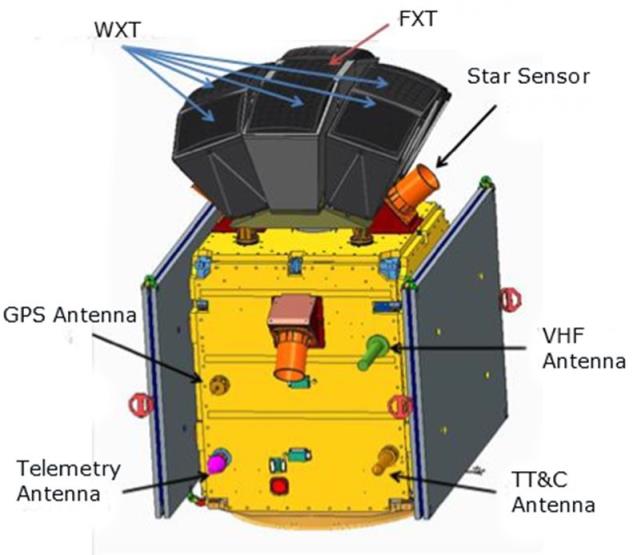The Einstein Probe (EP)
Einstein Probe (EP) is a small satellite dedicated to time-domain high-energy astrophysics and multi-messenger astronomy, which is a candidate mission of priority in the Space Science Programme of the CAS. Its primary goals are to discover high-energy transients and to monitor variable objects in the soft X-ray band, at higher sensitivity by more than one order of magnitude than those of the ones currently in orbit. It will employ a wide-field X-ray telescope (WXT) with a large instantaneous field of view (60°×60°, or ~1 steradian), along with moderate spatial resolution (FWHM ~5arcmin) and energy resolution. Its wide-field imaging capability is achieved by using established technology of novel micro-pore “lobster-eye” optics, thereby offering unprecedentedly high sensitivity and large Grasp. EP will also carry a narrow field of view (1°×1°), sensitive follow-up X-ray telescope (FXT) based on the same MPO technology to perform follow-up observations of newly-discovered transients. Public transient alerts will also be issued rapidly, in order to trigger multi-wavelength follow-up observations from the world-wide community. The mission is intended for a launch date around 2020.
The scientific objectives of the mission are: to discover otherwise quiescent black holes over all astrophysical mass scales by detecting their rare X-ray transient flares, particularly tidal disruption of stars by massive black holes at galactic centers; to detect and precisely locate the electromagnetic sources of gravitational-wave transients; to carry out systematic surveys of X-ray transients and characterise the variability of X-ray sources, such as high-redshift gamma-ray bursts, supernova shock breakouts, X-ray binaries of compact objects, gamma-ray bursts, active galactic nuclei and stellar coronal flares, etc.
